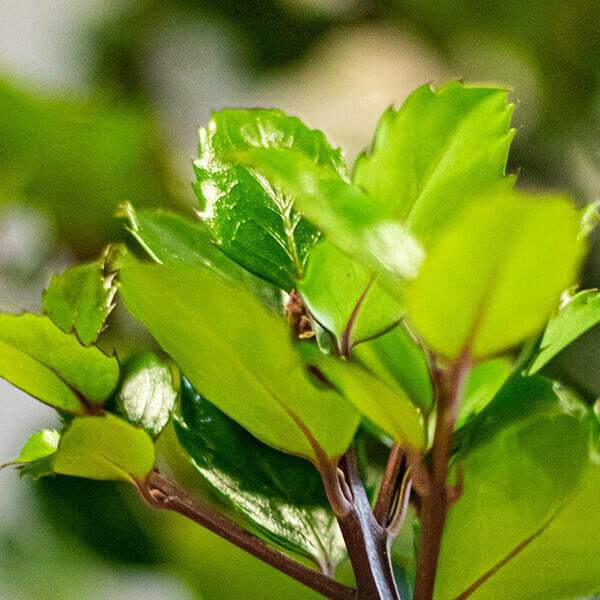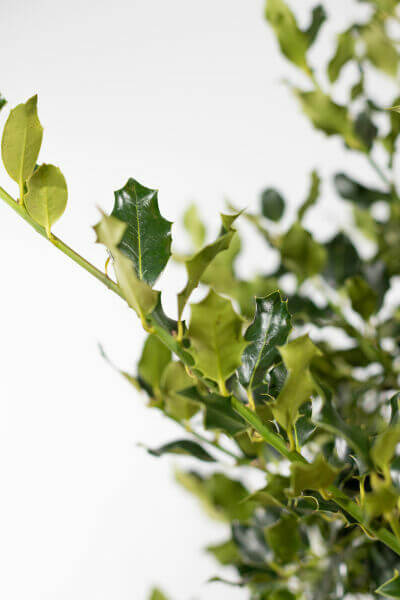Fast-growing Hedge Plants
Fast-growing Hedge Plants
Blog Article
Hedging Plants For Autumn Color
Enhance your garden's allure with lush hedge ranges such as Yew (Taxus), Thuja, Laurel, Photinia, and Bamboo, commemorated for their structural integrity and environmental advantages.
Yew and Thuja supply evergreen protection and winter resilience, while Laurel offers quick development and broad, fragrant leaves.
Photinia adds seasonal appeal with its lively red foliage, and Bamboo lends a low-maintenance, serene atmosphere.
These hedges enhance air quality, reduce noise, and create tranquil, private spaces.
Correct planting, spacing, and upkeep guarantee vigorous development and ecological harmony.
Check out how these rich ranges can elevate your garden's beauty and well-being.
Key Takeaways
Change Your Garden With Lush Hedge Ranges
- Select Yew for its dense, evergreen growth and unparalleled longevity.
- Select Laurel for its fast growth and broad leaves, ensuring quick personal privacy.
- Pick Photinia for its vibrant seasonal foliage, which turns a striking dark red.
- Make use of Bamboo for a low-maintenance, winter-hardy hedge with aesthetic appeal.
- Space plants 2-3 per meter and prune routinely for optimum development and health.
Popular Hedge Plants
When changing a garden with lavish hedge ranges, it's vital to consider popular hedge plants such as Yew, Thuja, Laurel, and Photinia due to their unique qualities and benefits.
Yew (Taxus) is highly esteemed for its longevity and dense, green growth, making it a prime choice for enduring landscapes.
Thuja is kept in mind for its evergreen foliage and robust winter season resilience.
Photinia includes seasonal vibrancy with red leaves that darken in time, producing dynamic visual appeal.
Laurel offers rapid growth and fragrant, broad leaves, ideal for quick personal privacy.
Additionally, Bamboo is an exceptional option for atmosphere, using a low-maintenance, winter-hardy alternative that improves the garden's aesthetic with its elegant, swaying walking canes.
These selections accommodate a variety of horticultural requirements and choices.
Benefits of Garden Hedges
Garden hedges provide a wide variety of advantages, making them a valuable addition to any landscape. These natural barriers are affordable to carry out and supply considerable wind protection, boosting air blood circulation and contributing to noise decrease. The dense foliage of hedges like Thuja and Beech ensures personal privacy by obstructing exposure, producing a peaceful and remote environment.
Hedges also play an important function in microclimate guideline, providing a steady environment that promotes plant development and minimizes temperature level fluctuations. Their detailed leaf structures filter pollutants, improving air quality and adding to a much healthier garden ecosystem.
Furthermore, hedges master sound reduction, taking in and deflecting acoustic waves to lower ambient noise levels. This double functionality of supplying both visual and acoustic personal privacy enhances the general harmony and aesthetic appeal of any garden.
Planting and Upkeep Tips
For an effective hedge, meticulous preparation of the planting area is vital. Ensure the soil has appropriate pH and drain to support strong root development.
Space the plants properly for the picked species. Water the hedge frequently during its initial growth stage, adjusting as needed with seasonal modifications.
Carry out a systematic insect control and disease avoidance method, using natural or chemical treatments when required. Routinely check for aphids, termites, and fungal infections.
Apply mulch to keep wetness and reduce weeds. Seasonal pruning promotes dense development and air flow, vital for plant health.
Following these standards will help you cultivate a dynamic, properly maintained hedge that enhances the beauty of your garden.
Spacing and Trimming Guidelines
Spacing and Trimming Guidelines
Appropriate spacing and trimming are important for cultivating healthy, aesthetically appealing hedges. Adequate spacing ensures each plant gets sufficient nutrients, light, and airflow.
Follow these guidelines for ideal hedge upkeep:
- Spacing: Position hedge plants 2-3 plants per meter to motivate robust development.
- Pruning Methods: Routine pruning is important for preserving preferred hedge height and shape. Trim new growth in summer and cut down older wood throughout winter season.
- Seasonal Care: Adjust trimming methods and schedules according to seasonal requirements to ensure plant health.
- Hedge Height: Regularly screen and trim to maintain the wanted hedge height and attain consistent aesthetic appeals.
Following these actions will guarantee your hedge prospers, enhancing both the appeal and functionality of your garden.
Picking the Right Hedge
Selecting the Right Hedge
Choosing the appropriate hedge includes assessing factors such as mature height, foliage density, and environmental resilience. Effective hedge plant selection requires comprehending each types' development attributes and site-specific versatility.
For example, Yew (Taxus) uses outstanding durability and dense development, while Thuja is noteworthy for its winter strength. Additionally, thinking about maintenance requirements is vital; fast-growing species like Laurel or Privet need regular cutting, whereas low-maintenance choices like Bamboo or Ivy may be more effective for those seeking very little upkeep.
Ecological aspects such as soil type, light availability, and wetness conditions ought to likewise guide the choice procedure. This cautious technique ensures the selected hedges will prosper, providing both functional and aesthetic advantages to the garden landscape.
Shipment and Planting Guidance
To guarantee your hedge plants thrive, they ought to be provided by specialized carriers and planted quickly upon arrival.
Follow these vital actions for successful planting:
- Soil Preparation: Enhance the soil with raw material to improve drainage and nutrient content.
- Planting Depth: Develop a trench two times the width and equal to the depth of the root ball.
- Watering Methods: Water thoroughly after planting, keeping the soil regularly wet but not saturated.
- Mulching: Use a layer of mulch to maintain wetness and reduce weeds.
Customer Support and Service
Given the important role of prompt support in horticultural pursuits, our consumer assistance team is offered 6 days a week through telephone, e-mail, and social media to provide expert suggestions and promptly address any concerns. Their commitment to fast response times guarantees client fulfillment by solving questions related to plant health, optimal planting methods, and upkeep schedules.

Response Time
This detailed support group, reinforced by a stellar 9.3/ 10 client ranking, highlights our dedication to boosting the gardening experience for every client.
Often Asked Concerns
How Long Does It Take for Hedge Plants to Establish?
Hedge plants usually need one to 3 years to become completely developed, with the exact duration varying by species and growing conditions.
Reliable care during this critical period is essential for robust development. Constant watering, vigilant weed control, and suitable fertilizer application are essential in promoting strong root development.
For example, fast-growing types like Laurel may establish faster, while slower-growing varieties such as Yew may take longer. Diligent upkeep speeds up the establishment process, resulting in thick and healthy hedges.
What Are the Finest Hedge Plants for Privacy?
The question of the very best hedge plants for personal privacy involves evaluating evergreen and deciduous options.
Evergreen hedges like Thuja, Laurel, and Cypress supply year-round protection, making sure continuous personal privacy.
In contrast, deciduous hedges such as Beech provide seasonal personal privacy, shedding leaves in colder months.
Key upkeep ideas for personal privacy hedges consist of regular trimming, fertilizing in spring, and proper spacing-- usually 2 to 3 plants per meter.
In addition, constant watering and diligent weed removal are essential for promoting healthy, dense growth.
Can Hedge Plants Draw In Wildlife to My Garden?
Yes, hedge plants can draw in wildlife to your garden by supplying vital benefits like shelter, food, and nesting sites, thus improving regional biodiversity. Yew, holly, and laurel are exceptional for attracting birds, while ivy supports a variety of bugs.
Nevertheless, it is very important to note that there are some downsides, such as increased maintenance to handle pests and routine maintenance. Carefully selecting and keeping hedge varieties can assist balance these advantages and downsides, eventually promoting a lively and sustainable environment in your garden.
Are There Any Flowering Hedge Plants Available?
Yes, there are flowering hedge plants readily available that can enhance the charm of your garden.
For instance, Elaeagnus, also called Olive Willow, produces fragrant white flowers in the fall, including a touch of beauty.
Photinia, another popular choice, showcases vibrant red leaves that mature into a rich green, developing a dynamic visual effect throughout the seasons.
To guarantee these plants flourish, it's important to practice proper pruning methods and seasonal maintenance, such as trimming brand-new development in the summer and cutting back in the winter season.
These steps will assist keep the health and visual appeal of your blooming hedges.
How Do I Avoid Pests in My Hedge Plants?
To prevent pests in hedge plants, employ natural pest control methods and maintain proper hedge care. Introduce advantageous insects like ladybugs, which take advantage of damaging insects, to develop a well balanced ecosystem.
Frequently examine your hedges for signs of infestation and without delay eliminate any affected parts to avoid the spread. Ensure the health of your hedges by using balanced fertilizers and providing sufficient water.
Make use of mulching to keep soil moisture and proper spacing to minimize plant stress and promote robust development. These practices jointly help in minimizing insect issues and preserving a healthy hedge.
Conclusion
In essence, choosing the best hedge varieties such as Yew, Thuja, and Laurel can transform any garden into a peaceful haven. These plants supply year-round plant, improve aesthetic appeal, and deal practical benefits like sound reduction and wind protection.
Correct planting methods, accurate spacing, constant watering, and seasonal trimming are crucial for ideal growth.
Reputable delivery services and skilled client support make sure a smooth experience from purchase to planting, making it easier than ever to elevate your outdoor area.
Garden hedges hedging plants offer a multitude of advantages, making them a valuable addition to any landscape. These natural barriers are cost-efficient to execute and provide considerable wind protection, improving air circulation and contributing to sound reduction. The dense foliage of hedges like Thuja and Beech makes sure privacy by blocking exposure, developing a secluded and peaceful environment.

Pruning Methods: Regular pruning is important for maintaining wanted hedge height and shape. Trim new development in summertime and cut back older wood during winter season.
Report this page